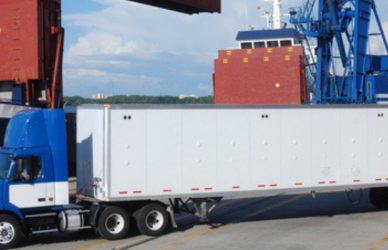As a truck driver, navigating the open road can often mean choosing between the glaring sun of daytime or the quiet darkness of night. While both options have their merits, truck driving at night presents unique challenges that demand heightened awareness and preparation. Despite the allure of reduced traffic and cooler temperatures, nighttime trucking comes with its own set of risks, including low visibility, wildlife encounters, impaired drivers, and fatigue. To ensure your safety and the safety of others, here are a few tips for truck drivers who find themselves on the nocturnal highways.
Stay Alert
Driving drowsy poses a grave danger to all road users, and truck drivers are no exception. Nighttime trucking requires extra vigilance, making it essential to get a full 8 hours of sleep each day. Many truckers struggle to maintain proper rest due to their unconventional living conditions on the road. Prioritizing sleep is crucial to staying sharp and responsive during the night shift.
Drive at or Below the Speed Limit
Nighttime conditions diminish visibility significantly, making it imperative for truck drivers to adhere to speed limits. Slowing down allows you more time to react to unexpected obstacles, such as wildlife darting across the road. When the sun goes down, prioritize safety over speed.
Keep Windows and Mirrors Clean
Visibility is your lifeline on the road, especially during nighttime driving. High beams can be blinding, and dirty windows and mirrors only exacerbate the problem. Dedicate a few moments every couple of days to clean your windows and mirrors thoroughly, ensuring unobstructed views of the road ahead.
Avert Your Gaze from Oncoming Vehicles
The headlights of oncoming traffic can be both distracting and perilous. Instead of fixating on the approaching vehicles, especially their high beams, shift your focus downward and to the right. As long as you can see the white line on the shoulder, you’ll maintain proper lane positioning without being blinded.
Beware of Drunk Drivers
While nighttime driving offers fewer vehicles on the road, it also brings an increased risk of encountering intoxicated drivers. Exercise heightened caution, particularly on weekends and around closing time for clubs and bars. Watch for erratic lane changes and other signs of impairment, always keeping a safe distance.
Utilize Your High Beams Wisely
High beams are your allies when it comes to night driving. They enhance visibility and illuminate the road ahead effectively. Remember that it’s safe to use them until you approach within 500 feet of another vehicle, at which point you should switch back to low beams.
Maintain Proper Following Distance
Maintaining an adequate following distance is vital at night, as reduced visibility can make it challenging to judge the distance between vehicles accurately. The general rule is to stay at least one truck length behind the vehicle in front of you for every 10 miles per hour of speed. This provides you with ample reaction time in case of sudden stops or emergencies.
Regularly Check Your Lights
Before hitting the road at night, conduct a thorough inspection of your truck’s lights, including headlights, taillights, brake lights, and turn signals. Ensure they are clean, properly aligned, and functioning correctly. Well-maintained lights are essential for your visibility to other drivers and for signaling your intentions on the road.
Monitor Weather Conditions
Stay informed about the weather conditions along your route, especially during the nighttime hours. Rain, fog, and snow can significantly reduce visibility and road traction. Adjust your driving speed and technique accordingly, and consider delaying your journey if the weather becomes too treacherous.
Plan Your Rest Stops
Plan your route to include rest stops or trucking-friendly facilities where you can take breaks, stretch your legs, and refresh yourself. Nighttime driving can be physically and mentally demanding, so regular breaks are essential to combat fatigue.
Be Cautious at Intersections
Intersections can be especially hazardous at night due to impaired visibility. Approach intersections with caution, even when you have the right of way. Look out for vehicles that may not yield or may run red lights.
Use Reflective Gear
Wearing reflective clothing and accessories when outside your truck enhances your visibility to other drivers and roadside assistance personnel. This is particularly important if you need to inspect your vehicle or make repairs on the side of the road.
Carry Emergency Essentials
Always have an emergency kit on hand, which should include items such as a flashlight, first-aid supplies, extra clothing, and non-perishable snacks. These items can be invaluable in case you encounter unexpected delays or emergencies on the road.
Most truckers are already pros at driving in the cover of darkness, but even pros can benefit from refreshers. Remember that safety is paramount, and your vigilance behind the wheel not only protects you but also contributes to the overall well-being of everyone on the road. So, stay alert, drive cautiously, and keep those wheels rolling safely through the night.











